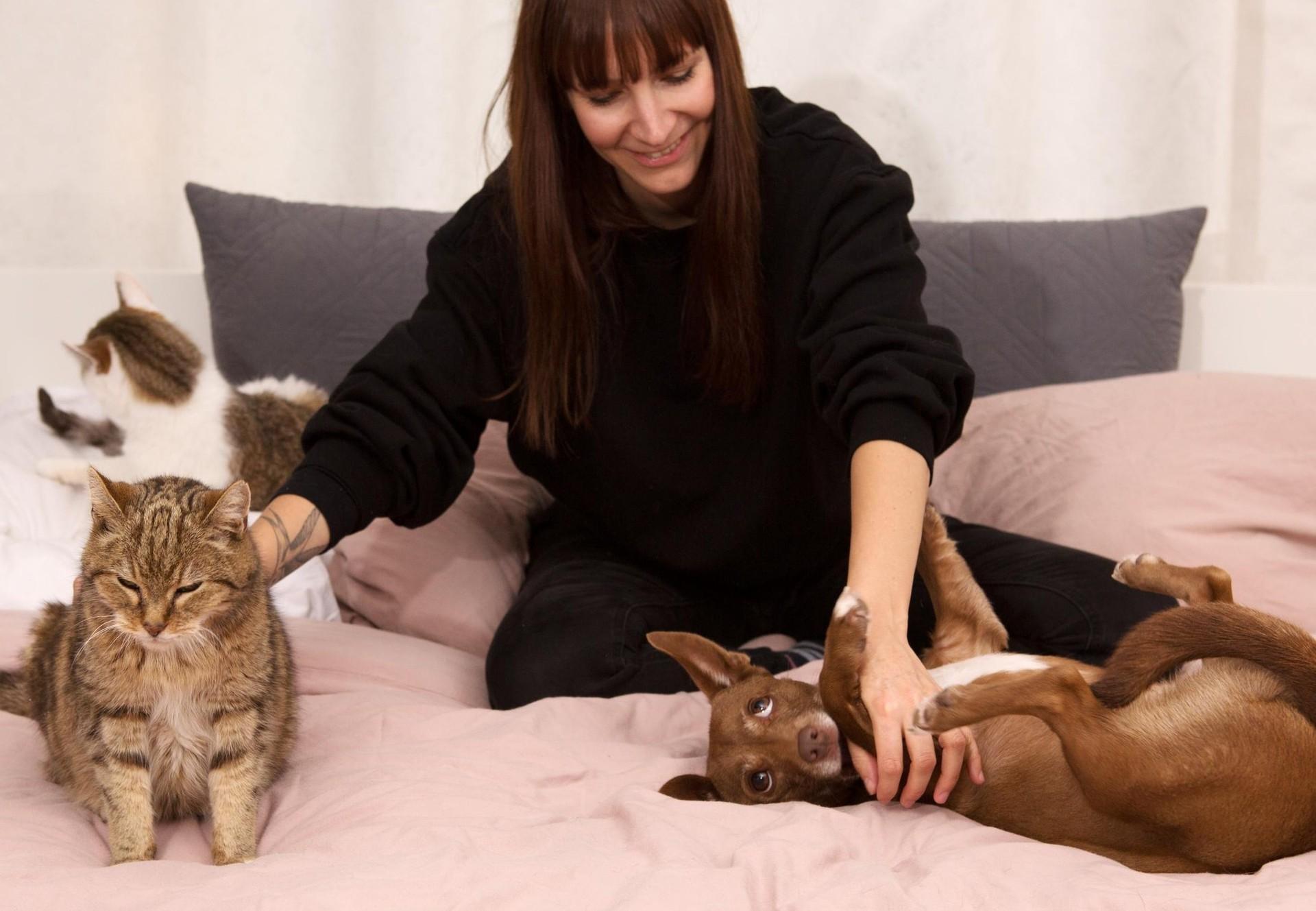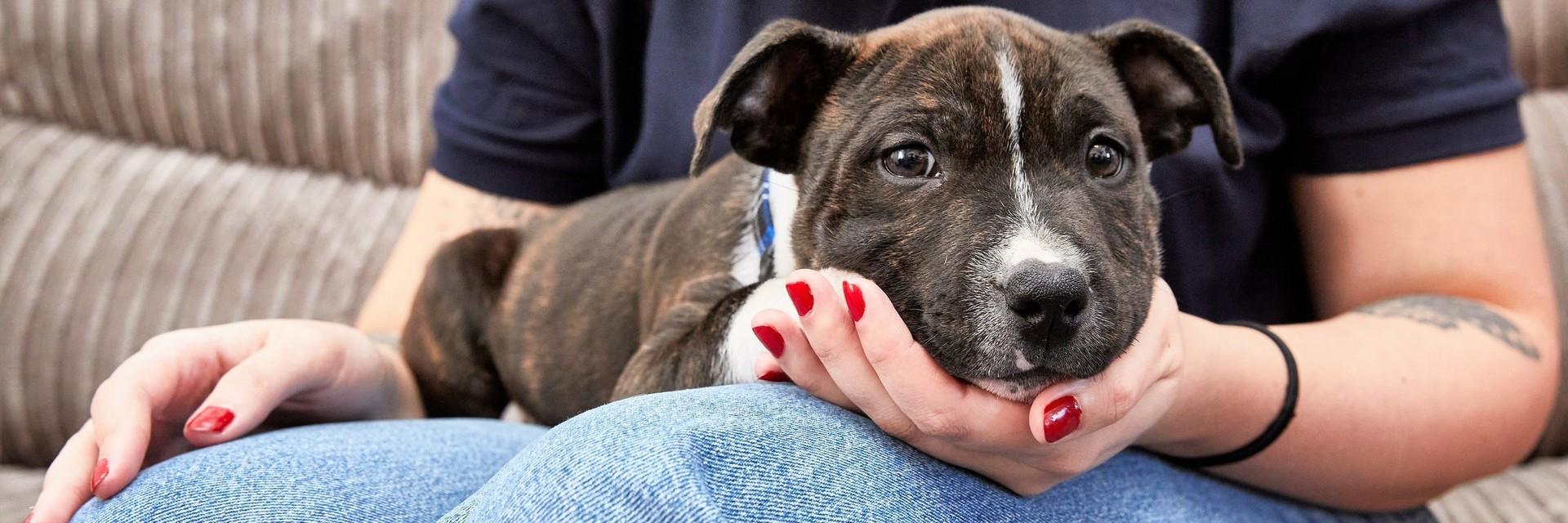
Cuddling With Pets
Snuggling is not only good for us, but also for the animals we share our lives with
Our everyday life shows us more and more what is really important in life. Work stress, social connections and the ever-growing to-do list – all of these fade into the background for a moment, when our dog lays his toy on our lap or the cat walks over the keyboard and rubs its head against us. This is when we should take a break and cuddle our pet. Cuddling, snuggling and scratching is good for people and animals together.
- It makes people and animals happy
Cuddling with a dog or cat leads to the release of the 'happiness' hormone, oxytocin in both animals and us. The hormone relates to feelings of trust and empathy and can contribute to a strong human-animal bond.
- Pets are looking for interaction
Dogs are social animals that naturally seek to bond with other animals and with people. While cats are known for being very independent, they too enjoy human touch. Observe your pet, are they sending you signs that it is 'cuddle time'? Is your dog nudging your leg with his nose? Does he lean into you? Is your cat purring in close proximity? Does she bump her head into yours? If that's the case, it's time to cuddle.
- Regular physical contact will help you keep an eye on your pet's health
Daily physical contact with your pet increases the likelihood that you will immediately notice when something has changed. When petting or cuddling your pet, watch out for physical abnormalities such as bumps, unpleasant smells or areas that appear (pain) sensitive or otherwise vulnerable. The more familiar you are with your pet's body, the faster you can get them the medical help they may need.
How to cuddle your pet
Your dog or cat will show you how and where they would like to be touched. Some dogs like wild, 'bear' hugs, others prefer to be touched carefully or even just lying-in contact with you. Many cats love to be scratched behind the ears or on top of the tail base. Very few cats like to be touched on the belly, this is a very vulnerable place.
Knowing the boundaries
Before you 'rush' to cuddle with your pet, check whether it wants to interact – in general, or at this moment. If your pet has moved to their basket or retreat, you should leave them in peace.
Correctly interpreting the signs as to whether your pet wants to cuddle or not is especially important if your pet has only recently moved in with you and is not yet familiar with you. Depending on the experiences the dog or cat has had in the past with the human touch (rough handling, blows, mistreatment), your pet might not yet appreciate being cuddled.
It can also be that your dog or cat is in pain and therefore does not want to be touched or the animal does not feel comfortable with the way you are touching them (are you touching it too intensely or too quick?).
Pay attention to your pet's body language and do not force them to love you.
Children and your pets
Sometimes, especially young children cannot gauge an animal’s uncomfortable signals as easily and they can quickly pass your pets stress threshold. If your pet is not familiar with children, there must be 100% supervision and awareness of your pet’s feeling. Many animals can find the playful nature and curiosity of children intimidating and scary. If not carefully and immediately managed this can result in a child being bitten or seriously hurt, and your pet also suffering terrible consequences.
Pass this necessary information to teach children that they too, accept and respect the pet's privacy.
You should always advocate for your pet

If your pet is uncomfortable or stressed when you or someone else is in close contact with your pet, then it is your responsibility to make sure the animal is left alone immediately. Signs of discomfort include moving away, looking away, showing the white of their eyes, lip licking, yawning, grumbling/growling in dogs and/or tensing their body.
Source
https://www.petmd.com/cat/behavior/what-causes-pet-become-overly-affectionate
Oxytocin: The love hormone? 2017 Sep 4 [accessed 2022 Jan 11].
https://www.medicalnewstoday.com/articles/275795
Nagasawa T, Ohta M, Uchiyama H. The Urinary Hormonal State of Cats Associated With Social Interaction With Humans. Frontiers in Veterinary Science. 2021;8:807. doi:10.3389/fvets.2021.680843
Nagasawa M, Mitsui S, En S, Ohtani N, Ohta M, Sakuma Y, Onaka T, Mogi K, Kikusui T. Oxytocin-gaze positive loop and the coevolution of human-dog bonds. Science. 2015 Apr 17 [accessed 2022 Jan 11].
https://www.science.org/doi/abs/10.1126/science.1261022. doi:10.1126/science.1261022
Being Touched Is Fine For Some Dogs, But Not for Others | Psychology Today. [accessed 2022 Jan 11].
https://www.psychologytoday.com/us/blog/animal-emotions/201903/being-touched-is-fine-some-dogs-not-others
You’re Not a Bad Pet Parent If Your Dog Doesn’t Like to Cuddle. [accessed 2022 Jan 11].
https://www.petmd.com/dog/pet-lover/youre-not-bad-pet-parent-if-your-dog-doesnt-cuddle Why We Shouldn’t Be Hugging Cats. [accessed 2022 Jan 11]. https://www.petmd.com/news/view/why-we-shouldnt-be-hugging-cats-37160

